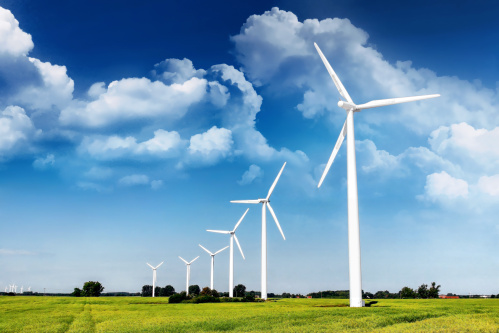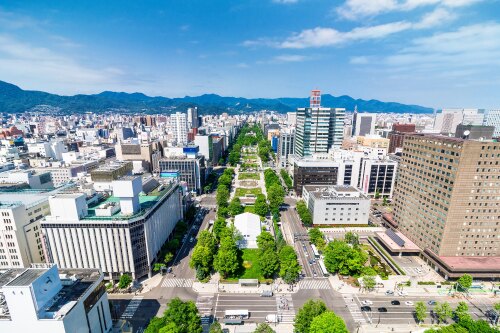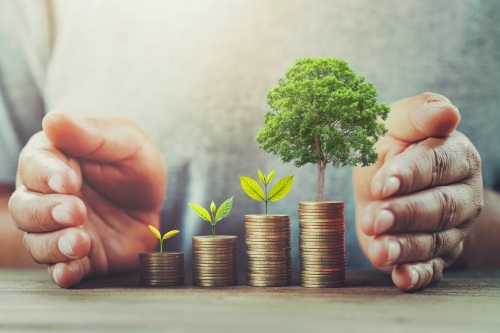Hokkaido's Renewable Energy Potential
The Global Shift Toward Renewable Energy: The Status of Renewable Energy Adoption in Hokkaido and Japan
Abnormal weather events are occurring on a global scale, and large-scale natural disasters are increasing, making the response to climate change a common challenge for humanity.
At the 28th Conference of the Parties to the United Nations Framework Convention on Climate Change (COP28), a goal was set to triple renewable energy generation capacity by 2030. Countries, including Japan, have announced plans to expand the adoption of renewable energy.
The Status of Renewable Energy Adoption Globally and in Japan
Globally, the generation of renewable energy has been expanding, and its share in total electricity generation is increasing. However, Japan’s renewable energy adoption rate remains relatively low compared to other countries, due to factors such as high costs, weather conditions, and geography and terrain.
On the other hand, Japan ranks third in the world for solar power generation, and its solar energy capacity per unit of land area is among the largest of major countries.
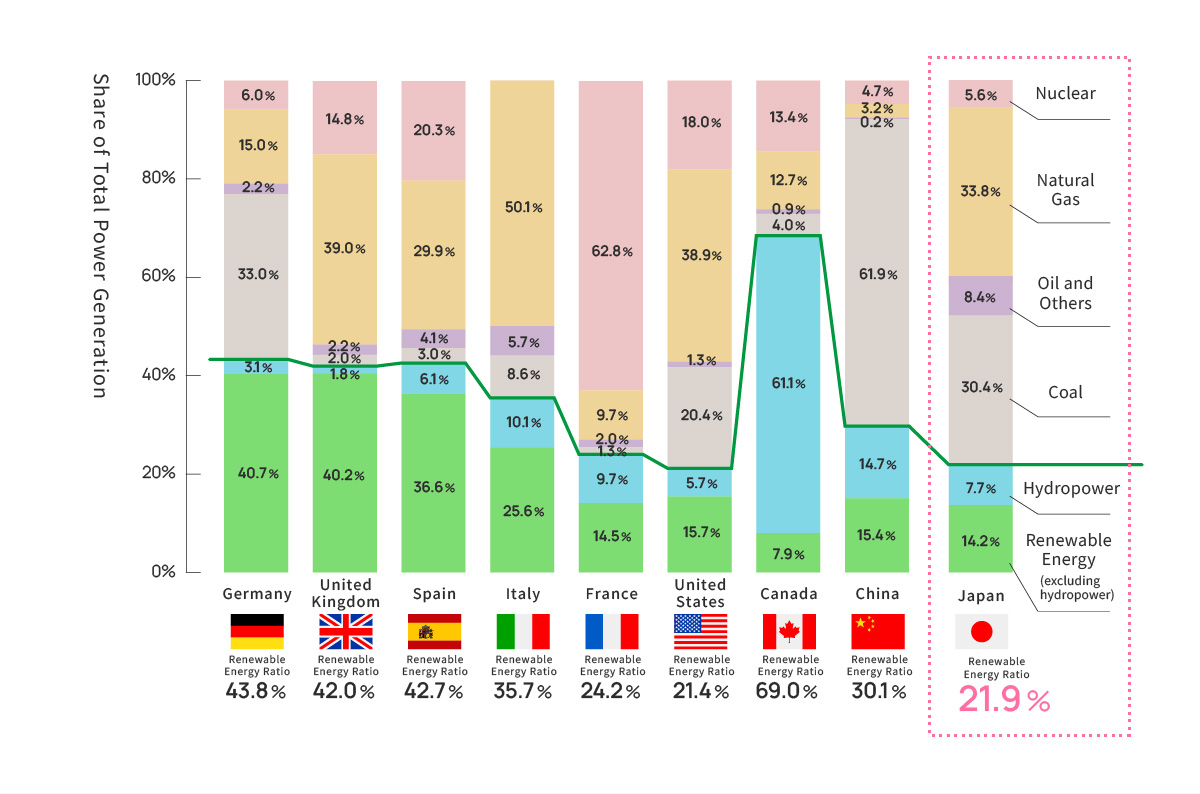
Source: Created based on the “Comparison of Renewable Energy Share in Electricity Generation among Major Countries” by the Agency for Natural Resources and Energy.
The Status of Renewable Energy Adoption in Hokkaido
Hokkaido’s renewable energy generation and the share of renewable energy sources are expanding year by year.
Hokkaido has the highest potential for renewable energy in Japan, and by leveraging this potential, it plays a significant role in supporting the promotion of renewable energy adoption across the country.
Hokkaido is an advanced renewable energy region that exceeds the national Basic Energy Plan targets.
- The government has developed a basic energy plan and has set a target to increase the share of renewable energy from 36% to 38% by 2030.
- Hokkaido boasts a high renewable energy ratio of 37.2% as of 2023, with the latest estimates putting the figure at over 38%.
- Hokkaido’s achievement of the target ahead of the rest of the country supports the promotion of the introduction of renewable energy in order to achieve the national planning target in the whole country.
Renewable Energy Adoption Record in Hokkaido (Annual Generation) and the Share of Renewable Energy in Total Electricity Generation
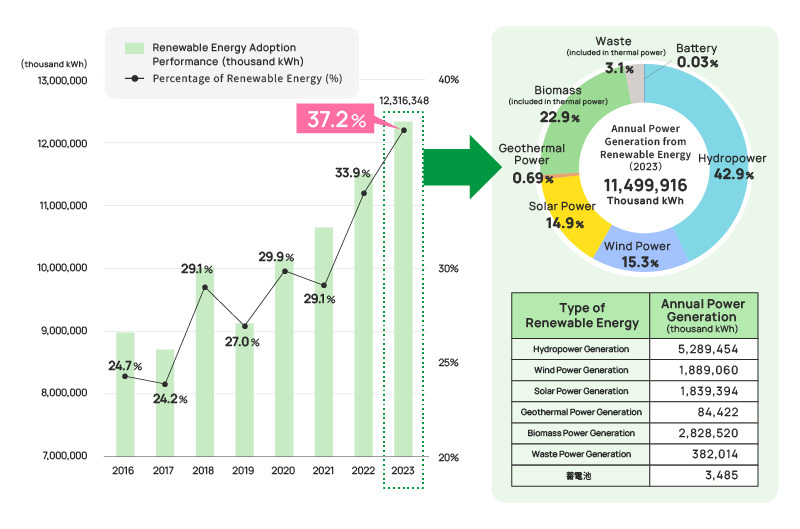
Source: Created based on the “Electricity Survey Statistics” by the Agency for Natural Resources and Energy.
Hokkaido’s Unmatched Renewable Energy Potential in Japan
Hokkaido has some of the top renewable energy adoption potentials in Japan, including solar, wind, small and medium-scale hydro, and geothermal energy.
The Share of Hokkaido’s Renewable Energy Adoption Potential in Japan
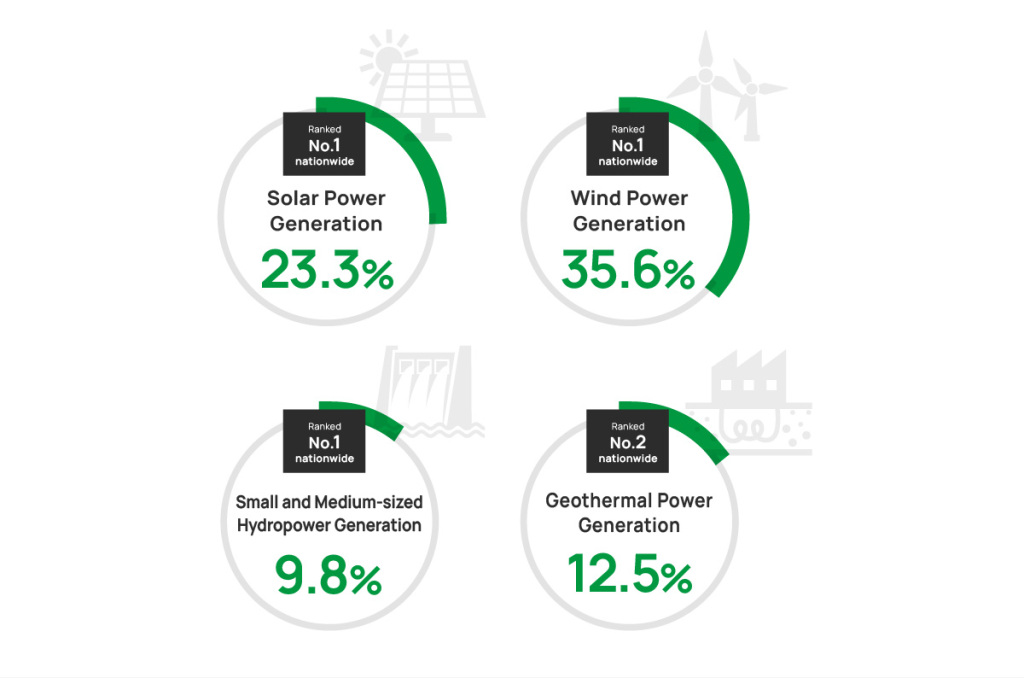
Source: Created based on the “Renewable Energy Information Provision System (REPOS)” by the Ministry of the Environment.
The introduction of various types of renewable energy has further accelerated in Hokkaido in recent years.
Wind, solar, water, and geothermal. The introduction and practical use of renewable energy utilizing the diverse energy sources of Hokkaido’s vast land are progressing.
Examples of Renewable Energy Adoption and Potential
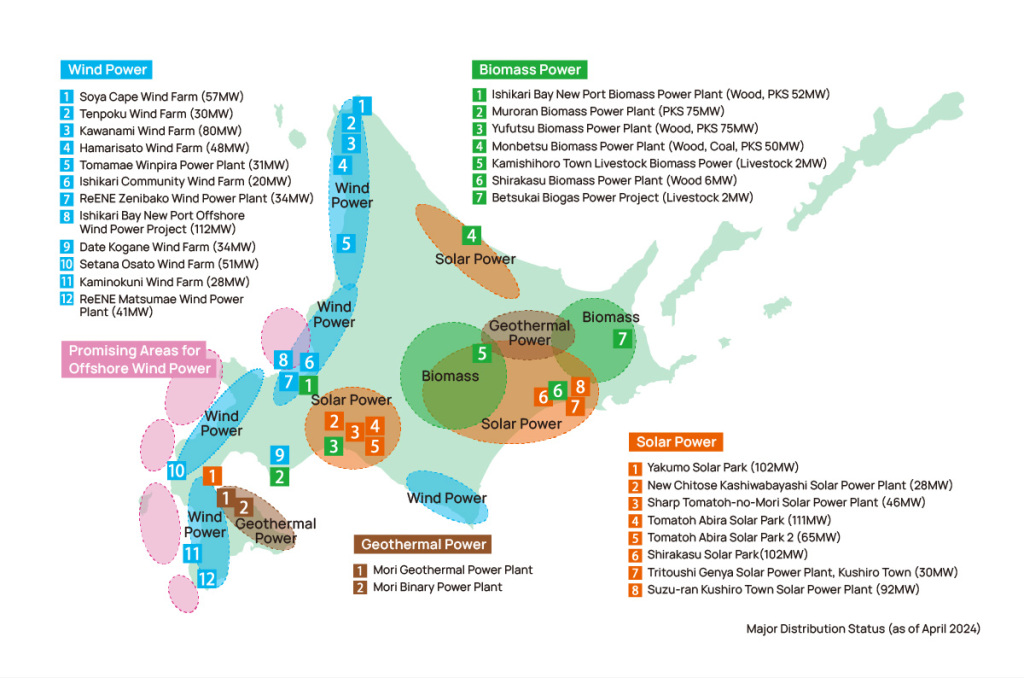
Efforts for Local Production and Consumption of Energy Leading to Regional Economic Revitalization
By promoting local production and consumption of energy, making the most of Hokkaido’s energy resources, the region is increasing its energy self-sufficiency and improving energy security, which in turn is boosting the adoption of renewable energy.
Efforts to implement local energy production and consumption are revitalizing the regional economy and working to enhance investment value.
A Local Production and Consumption Model of Energy through Industry-Government-Academia-Citizen Collaboration
Models for local production for local consumption have been created to promote local production for local consumption of energy and to create new industries (revitalisation of regional development and job creation) in various parts of the province, thereby increasing regional value.
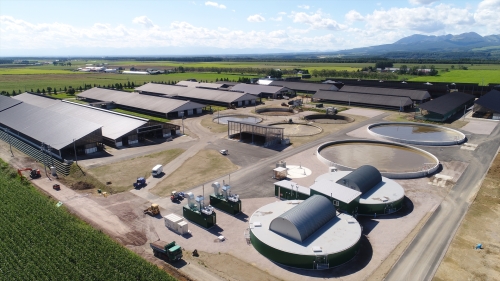
Image provided by: Kamishihoro Town
Kamishihoro Town (Livestock Biomass)
- A new regional energy company has been established, and an energy management system for livestock, which controls the electricity usage of livestock farms, has been introduced.
- By developing a livestock manure biogas plant, electricity is supplied to dairy farmers, residential homes, and businesses, while heat is provided to agricultural greenhouses.

Image provided by: Teshikaga Town
Teshikaga Town (Geothermal)
- A regional energy company has been established with investments and participation from local residents and businesses. The company is managing the region’s geothermal resources collectively while promoting new uses.
- A new geothermal well has been drilled, and binary power generation will be carried out in the urban area, with plans to supply electricity to public facilities.
- After using the thermal water from power generation for heating, it is being considered for use in general residences and other facilities, exploring effective utilization of geothermal energy.
Wakkanai City (Wind Power and Hydrogen Utilization)
- Looking ahead to the end of the FIT (Feed-in Tariff) period for the wind power generation equipment owned by the city, an energy management system is being developed and operated to optimally utilize the electricity generated by leveraging Hokkaido Electric Power’s transmission and distribution network across multiple remote public facilities.
- The generated electricity will be converted into hydrogen, with plans to explore its use at hydrogen stations and public facilities.
Ishikari City (Solar Power and Hydrogen)
- A renewable energy (solar power) energy storage and combined heat and power system (ES) has been installed in the Atsuta area, along with the construction of a small-scale village microgrid.
- Efforts are being made to improve regional disaster resilience, as well as to explore energy management systems within the community, environmental and energy education, and community development.
*ES: An independent energy system that produces and stores electricity and hydrogen from renewable energy.

